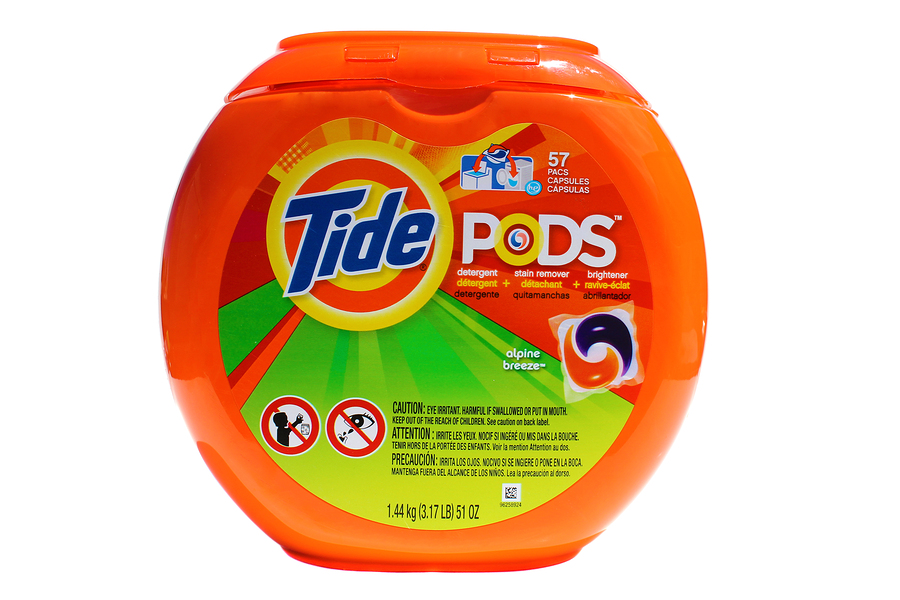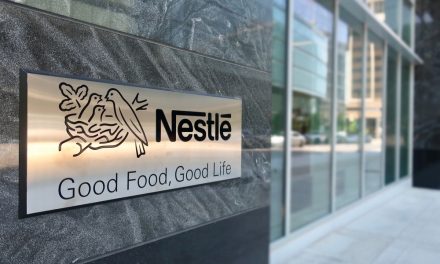Laundry detergents with dangerous chemicals, including Tide Pods, should not be eaten or used to wash your clothes.
The now-infamous tide pod challenge – a ridiculous meme about eating Tide detergent pods which has now morphed into a real-world challenge – has millions of people scratching their heads in disbelief. Well, believe it or not, this challenge has been around since 2015, but only went viral at the start of the new year. This challenge is now putting hundreds of kids in the hospital with chemical burns in their mouths.
RELATED STORY:
According to the American Association of Poison Control Centers (AAPCC), there have been 39 cases of people between the ages of 13 and 19 intentionally ingesting tide pods this year. These incidents made up 91% of detergent-related exposure calls the AAPCC have received this year. It appears not everyone has enough common sense to resist jumping off a bridge just because all the kids on the internet are doing it. However, there is another issue related to Tide products altogether: Tide products are FULL of chemicals that can be harmful even when not ingested.
Tide has been on the market for 70 years and has become the #1 recognized laundry product by consumers, as well as consistently dominating other competitors in sales. Unfortunately, it would appear this billion dollar company doesn’t necessarily have the environment or consumers health factored into their business model.
Let’s take a look at a list of chemicals found in tide products.
- water
- alcoholethoxy sulfate
- linear alkylbenzene sulfonate
- propylene glycol
- citric acid
- sodium hydroxide
- borax
- ethanolamine
- ethanol
- alcohol sulfate
- polyethyleneimine ethoxylate
- sodium fatty acids
- diquaternium ethoxysulfate
- protease
- diethylene glycol
- laureth 9
- alkyldimethylamine oxide
- fragrance
- amylase
- disodium diaminostilbene disulfonate
- DTPA
- sodium formate
- calcium formate
- polyethylene glycol 4000
- mannanase
- Liquitint™ Blue (a dye)
- dimethicone
All of the chemicals listed are not in every Tide product. For the most commonly used chemicals (and the reasons for using them) take a look at Tide’s own website.
RELATED STORY:
Groups like the Women’s Voice’s for the Earth have been fighting to pass legislation in California to reduce and disclose chemicals like those used in cleaning products. Ingredients like diethylene glycol, propylene glycol, 1,4 Dioxane, and “fragrance”(a secret mix of chemicals not disclosed to consumers or regulators) are among the most commonly found not only in detergents but in other products from pesticides to brake fluid. It’s impossible for us to break down every chemical by name and nature in a short article like this one, but I encourage readers to investigate them for themselves.
RELATED STORY:
Will using Tide products kill you?? Not unless you plan on eating them.
The health dangers associated with eating, inhaling, or absorbing these chemicals include skin irritation, dizziness, liver/kidney problems, and even cancer. The danger of using detergents filled with chemicals is dependent on exposure over an extended period of time. Exposure to the chemicals can manifest from unexpected sources. While washing laundry with Tide products you are sure to smell the aroma of their chemical cocktail if you’re in a close enough vicinity to the washing machine. Many of the above-listed chemicals can be dangerous if inhaled over long periods of time, putting cleaning industry workers or people with small homes in danger of exposure-related illnesses.
Another way these chemicals can find their way into your bloodstream is through sweat. If you put on a freshly washed pair of underwear, shirt, or pants, and then perform a physical activity, your skin could absorb all the chemicals used to wash your clothes. Many of those chemicals are solvents specifically made to dissolve well in water, and since your armpits and groin areas can absorb up to 100% of anything that is topically applied it puts you at risk for exposure.
RELATED STORY:
Despite Tide’s current grip on the laundry detergent industry, there are companies out there who hold higher standards for their consumers as well as the environment. Seventh Generation is a good alternative to many mainstream soaps and detergents, check out this list of products along with their ingredients and risks.
The best way to avoid all chemicals in your laundry detergents is, as always, to make your own! Here is a great natural recipe to get you started on your own formula. The best way to enact change and accountability in the marketplace is to use consumer power to vote out companies that don’t have the communities best interests at heart and be sure to support the businesses that do. Buy products that you have personally researched, or make and sell your own. Be a part of the change one product at a time.
(You can also check out this homemade soap recipe below!)
*Article originally appeared at The Anti Media.












